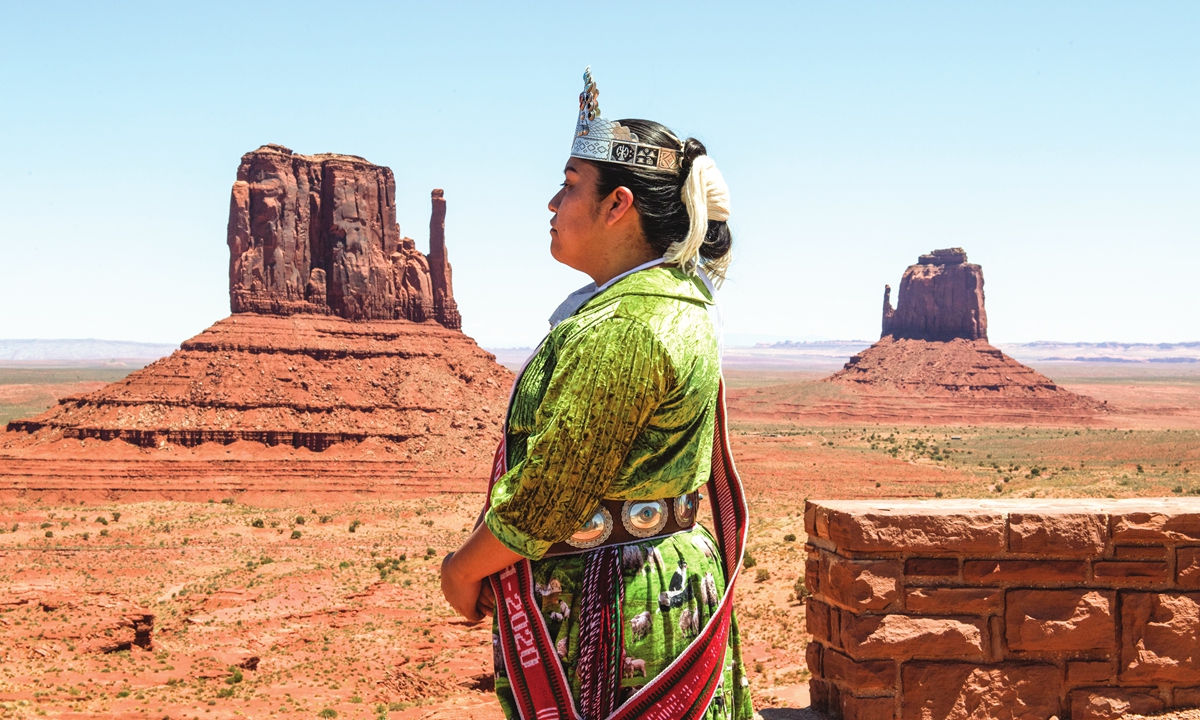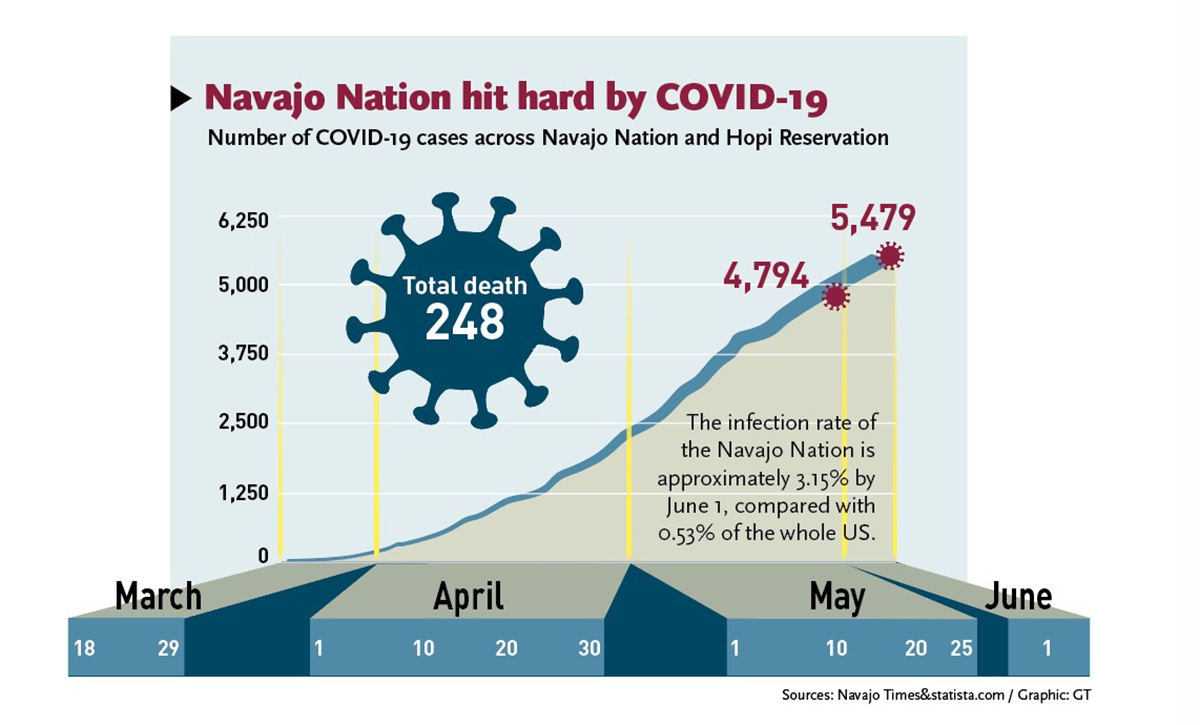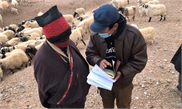
Miss Navajo Nation Shaandiin Parrish poses at the viewing point of the Monument Valley Tribal Park, which has been closed due to the Covid-19 pandemic in Arizona on May 21. Photo: AFP
Global health experts have raised their concern that COVID-19 is ravaging US minority groups and Native Americans as the long marginalized communities are unable to secure equal access to medical services and guidance in the fight against the coronavirus, reflecting how mninorities and the indigenous people in the US have suffered for centuries, especially during national crises.
At a time when protests and riots swept the US after the death of the African-American George Floyd at the hands of US police in Minneapolis, some US media recalled how African-Americans and other Native groups suffered far seriously - several times more than whites during the 1918 flu pandemic, and there seems no exception in this coronavirus pandemic.
Experts say more than 5 million people who identify as American Indians and Alaskan Native are especially vulnerable, US media reported.
The US government's incompetence in controlling the domestic epidemic worsens the vulnerability of the minority groups in the global medical crisis.
Incapable government officials never reflect on their own systematic loopholes but rather keep blaming the Chinese government, which, in contrast, guaranteed equal accessibility of treatment for all ethnicities and valued the human rights of the vulnerable as a priority.
Failed obligations
By mid-May, Navajo Nation surpassed New York and New Jersey for having the highest per-capita COVID-19 infection rate in the US. For Paige Murphy, an independent Navajo activist in Albuquerque, New Mexico, this was not a surprise, but a reminder.
Given the facts that many diseases such as diabetes, cancer, heart disease or asthma had been prevalent in indigenous communities, the virus, as many local officials concerned, is likely more lethal to Native people, especially elderly, who dwell in narrow, tiny and crowded departments.
"Coronavirus is exposing a lot of problems that the reservation already had," Murphy told the Global Times. "The Navajo reservation only has 13 grocery stores. A lot of Native people don't have the funds to buy in bulk or stock up," which she added was a big reason many Navajo families make frequent trips for basic necessities, increasing infection risks."

graphic: GT
The Trump administration pledged $600 million to the Navajo Nation under the CARES Act passed in March. The relief package stipulated $10 billion for Native communities throughout the US. The Treasury Department said it would only allocate 60 percent of the fund based on population data, but tribal leaders say the federal government is dragging its feet.
"The tribe has yet to receive any money from the federal government. They're still waiting on that financial aid," said Murphy, adding such money could buy testing kits and PPE. The Navajo Nation has recorded more than 4,100 cases.
Access to testing kits has been a major focus for Native leaders, but not a focus for certain US state and federal officials.
In March, the Seattle Indian Health Board requested state agencies send testing kits. They received body bags instead.
Even before COVID-19, Native hospitals were understaffed and underfunded. "When I was lobbyist in DC, it was a common thing to be bringing in a new client looking for a new hospital because they didn't have anything at all or because their hospital had equipment 20 to 30 year old," Tara Houska, an attorney and founder of the GINIW Collective, a indigenous womens' environmentalist group, told the Global Times.
"Watching the ark of this story and this pandemic has been a very blatant reflection of where mainstream society sits when it comes to pitting science against oligarchy." The Cheyenne River Sioux Tribe erected checkpoints on their reservation to contain the virus. But state government has opposed the tribe's efforts to set up checkpoints to monitor for COVID-19.
"Closing tribal borders would have huge implications for the Keystone XL pipeline," which would pass through indigenous land, said Houska, who noted that Enbridge sent 4,500 to 6,000 workers without consulting local Natives, at a time when access to medical equipment is precarious.
Despite only being 11 percent of New Mexico's population, Native American COVID-19 infections made up almost 60 percent of the state's cases.
"All Native people are offered free healthcare as a party of treaty rights, but the healthcare people are offered is under a lot of scrutiny," said Murphy, citing a program which attracts sometimes inexperienced doctors to reservations by helping them with student loans.
Moreover, 30 percent of the Navajo Nation population lacks running water, affecting efforts to ensure preventive sanitation.
"There's so much oversight and control the federal government maintains over tribal land, and that is absolutely crushing when it comes to engaging in any development," said Houska, adding that "We have serious structural racism and serious economic issues to deal with."
Native Americans have historically been disproportionately affected by epidemics, sometimes inflicted by US government ethnic cleansing campaigns and biological warfare. Civil rights activist Reverend Jesse Jackson echoed the sentiments of Natives opposing government neglect during the global COVID-19 pandemic, tweeting "To ignore the Navajo Nation is a denial of humanity and acceptance of genocide. They deserve better."



